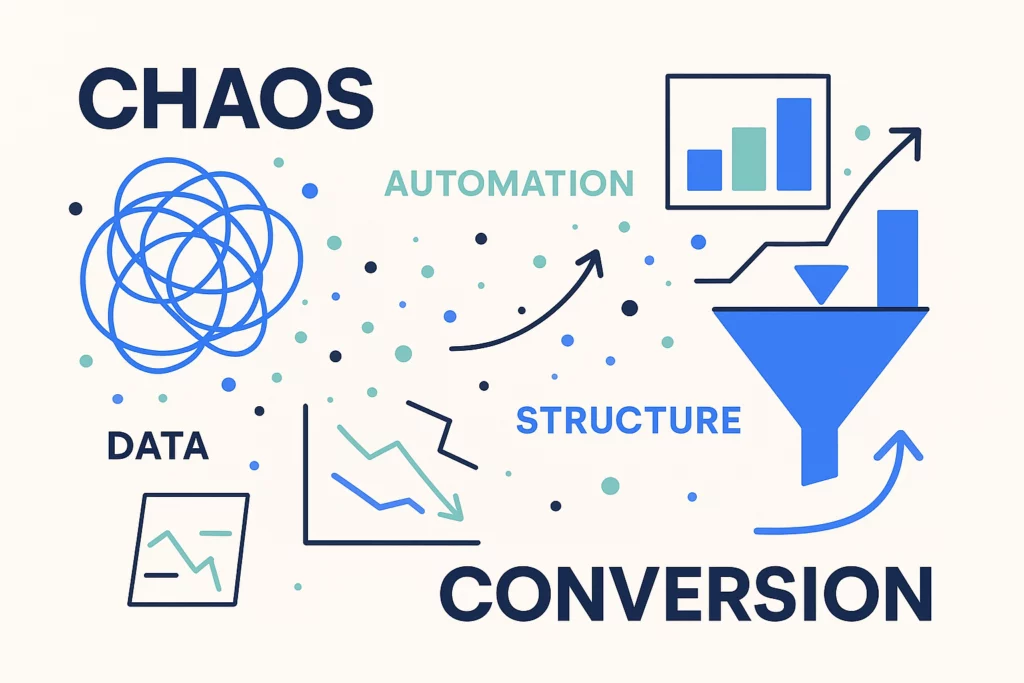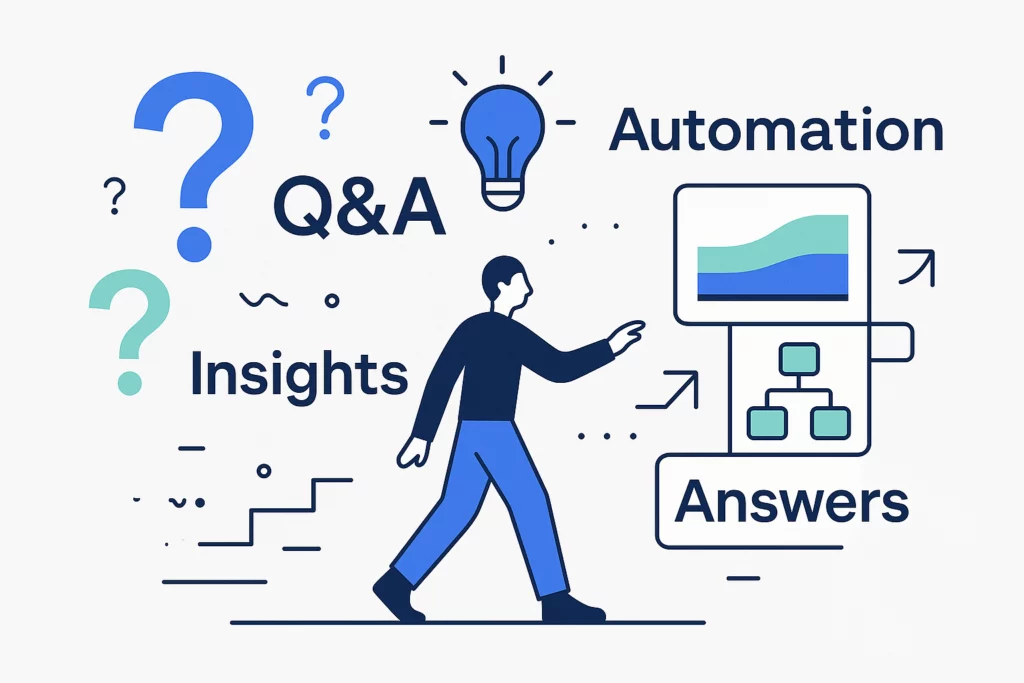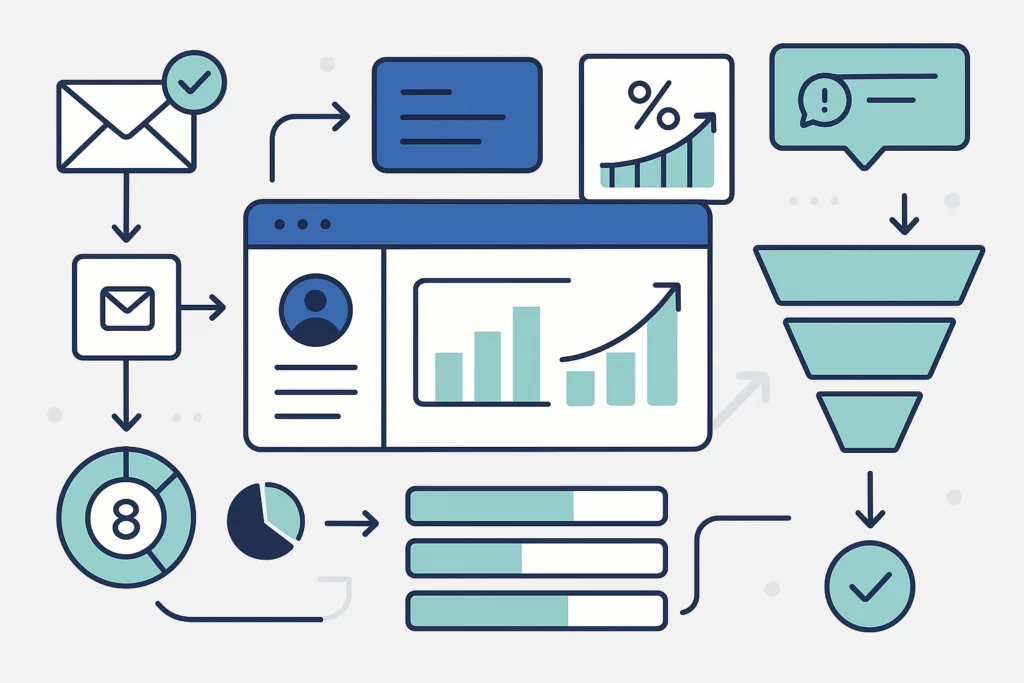From Chaos to Conversion: How B2B Marketing Automation Transforms Your Pipeline
Discover how B2B marketing automation turns scattered efforts into scalable growth.
Ever feel like your marketing team is playing whack-a-mole—chasing leads, sending follow-ups, scheduling demos—all while trying to “do more with less”? You’re not alone. In today’s competitive digital landscape, B2B marketing automation is the difference between constant firefighting and predictable revenue growth.
Whether you’re drowning in data or just getting started, this guide will help you understand the power of automation—and how to actually make it work for your business (not the other way around).
Let’s dive in.

Why Your Business Needs B2B Marketing Automation (Like, Now)
Let’s get real: spreadsheets and wishful thinking won’t scale your pipeline. Automation will. Here’s why smart B2B teams are automating today:
Automation keeps working even when you’re asleep—sending the right content to the right prospect at the right time. It’s like cloning your best marketer and making them tireless.
It ensures your brand stays top-of-mind throughout long sales cycles, even when your team is offline. By delivering hyper-relevant content based on a prospect’s behavior, automation builds trust without overwhelming them.
You no longer have to rely on manual follow-ups or guess when to reach out—automation does the heavy lifting with precision and timing. The result? More qualified conversations and fewer lost leads.
With lead scoring, activity tracking, and behavioral insights, your sales team knows exactly who’s worth calling. No more cold leads. No more guesswork.
B2B marketing automation creates a single source of truth where both teams operate with aligned data and goals. This eliminates finger-pointing and helps focus everyone on high-intent opportunities.
When marketing delivers better-qualified leads, sales can close faster—and with more confidence. It’s no longer a game of quantity; it’s about quality connections that convert.
Instead of reinventing the wheel every time, automation helps you build systems that work again and again—across campaigns, markets, and teams.
Once a successful workflow or email sequence is built, it can be duplicated, tweaked, and optimized with minimal effort. This means your team spends less time executing and more time innovating.
Whether you’re launching a product, entering a new market, or upselling current clients, automation lets you scale without scaling chaos. You’re not just working harder—you’re working smarter at scale.
B2B Marketing Automation: Questions You Were About to Ask ChatGPT
We get it—you’re busy scaling, selling, and surviving. Before you even typed the question into ChatGPT, we put together this lightning-round Q&A with everything B2B decision-makers like you need to know about B2B marketing automation.

B2B marketing automation is the use of software tools to automate repetitive marketing tasks, such as lead nurturing, email sequences, and segmentation. These tools help you personalize content at scale, prioritize leads based on behavior, and keep sales and marketing in sync. In a nutshell, it’s like giving your team superpowers—with less manual work and more ROI.
Because guesswork doesn't scale—and spreadsheets don't close deals. With automation, your team can nurture leads 24/7, align sales and marketing through lead scoring, and create repeatable systems that work across all markets. You’ll gain speed, clarity, and consistency—all while improving the customer experience and boosting your bottom line.
The best B2B marketing automation platforms integrate seamlessly with your CRM, support multi-channel campaigns, and offer robust analytics. You’ll want features like behavioral triggers, lead scoring, and segmentation tools that help tailor your message to different stages of the buyer journey. Bonus points for platforms that offer AI-powered personalization and advanced reporting.
Top contenders include HubSpot (great for all-in-one CRM and automation), Marketo Engage (ideal for enterprises), and ActiveCampaign (perfect for lean teams with complex workflows). Salesforce users often prefer Pardot, while Brevo (ex-Sendinblue) is perfect for budget-conscious companies. Each tool serves a different use case, so start with your goals—and build from there.
Start by mapping out your customer journey and segmenting your audience. Define clear goals (like increasing MQLs or reducing time to close), then build content that addresses each stage of the funnel. Launch with a small, high-impact workflow—like an email nurture sequence—then measure results and scale up from there.
If you're overwhelmed with manual follow-ups, noticing leads slipping through the cracks, or your sales and marketing teams are out of sync, it’s time. Automation becomes essential when your pipeline outgrows your current tools. The earlier you start, the more you can test, optimize, and grow predictably—without burning out your team.
For a no-fluff introduction to automation and its business impact, we recommend this guide by the U.S. Small Business Administration.
And if you're ready to implement a real strategy, Mass Data offers expert-led automation services designed specifically for B2B companies. We don’t just set up tools—we build systems that scale with you.
B2B Marketing Automation Strategy Blueprint
Here’s a simple framework to guide your automation efforts:
Map the Buyer Journey
Understand where your ideal customer starts, how they evaluate solutions, and when they’re ready to buy. Pinpoint common drop-off points and objections at each stage of the funnel. This allows you to create targeted messages that anticipate concerns and build trust.
Segment Your Audience
Group leads by industry, behavior, lifecycle stage, or company size to deliver tailored experiences. Segmentation ensures your messaging resonates deeply instead of feeling generic. The more relevant your approach, the higher the engagement and conversion potential.
Set KPIs & Goals
Examples: Increase MQLs by 20%, reduce time-to-close by 30%, or boost email open rates to 25%. KPIs help measure progress and keep your team focused on what truly drives revenue. Make sure goals are SMART (specific, measurable, achievable, relevant, time-bound) to stay on track.
Create Content That Converts
Develop resources for each funnel stage—eBooks, webinars, demos, comparison guides. Content should educate, solve pain points, and position your solution as the logical next step. Consider repurposing content across formats to increase reach without extra workload.
Automate and Optimize
Start small (one flow), test, analyze, and gradually scale as you learn what works. Use A/B testing to refine subject lines, CTAs, and timing. Continuously monitor performance data to improve workflows and increase ROI.
B2B Automation in Action: Real Campaigns, Real Results
Here’s how B2B companies are using automation to streamline their funnel:

What Results Can You Expect?
Here are some eye-popping stats from companies that nailed their B2B marketing automation:
- +451% more qualified leads (Annuitas Group)
- +14.5% increase in sales productivity (Nucleus Research)
- -12.2% reduction in marketing overhead
But results don’t happen by accident. You need the right strategy, not just the right software. That’s why we built a custom automation service for B2B businesses at Mass Data—so you can focus on growth, not guesswork.
Automate What Matters
Here’s the truth: Automation isn’t about replacing your team—it’s about amplifying them. Done right, it builds consistency, saves time, and makes your entire marketing operation more intelligent.
Whether you’re nurturing leads, syncing with sales, or just trying to stop drowning in spreadsheets, B2B marketing automation gives you leverage.
Don’t just grow. Grow with systems.
And if you need a partner to guide the strategy, implementation, and optimization?